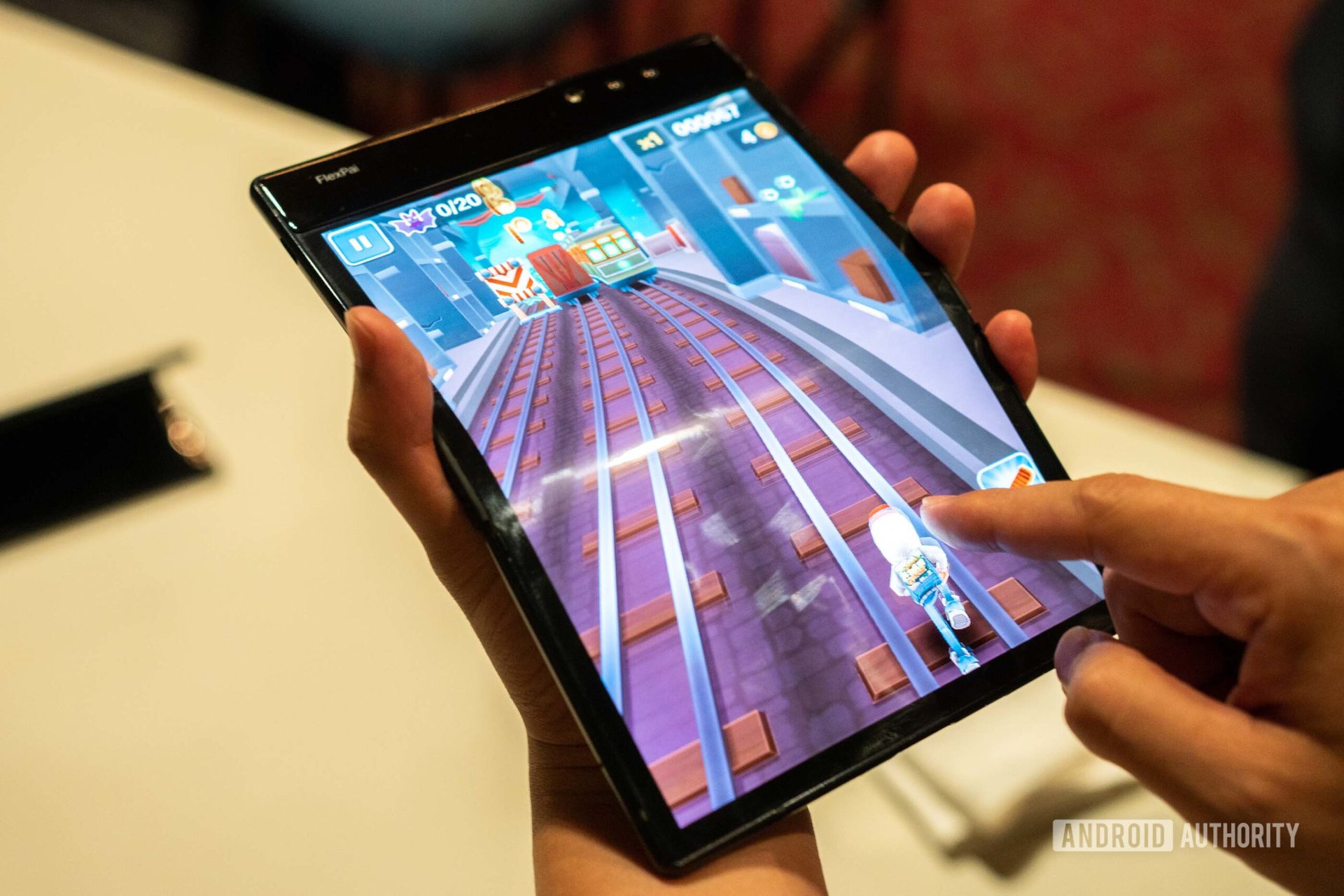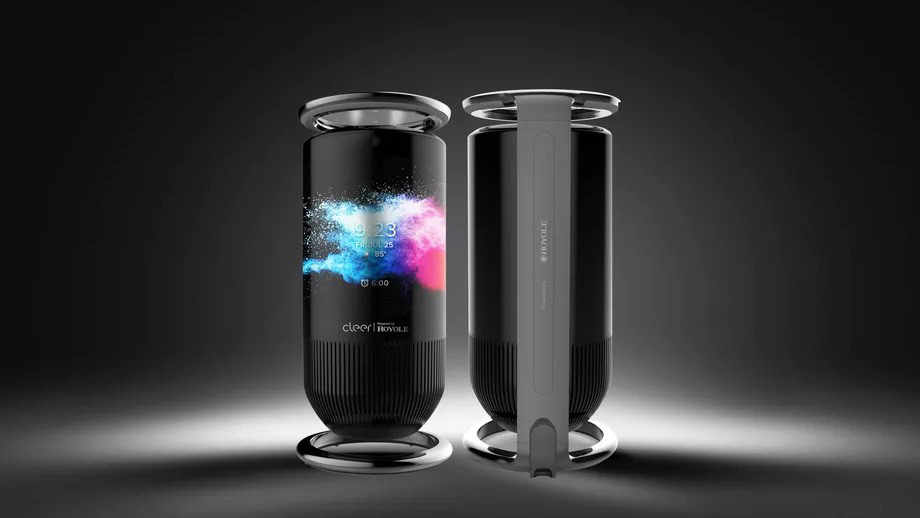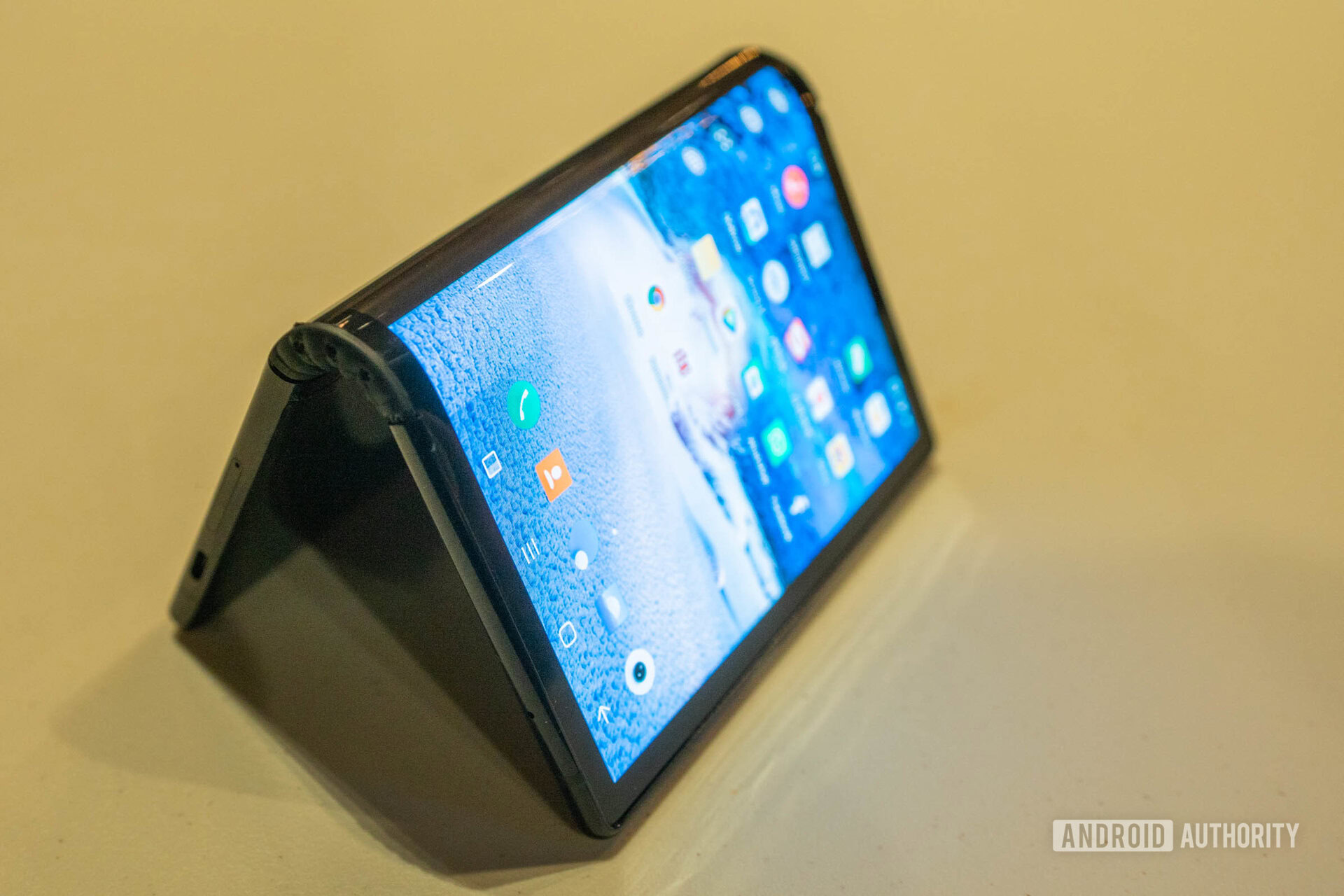Affiliate links on Android Authority may earn us a commission. Learn more.
CEO behind FlexPai in the dark on Escobar Fold 1, but passionate about future
Published onJanuary 9, 2020

Royole — the company behind the world’s first foldable smartphone to market, the Royole FlexPai — had a big presence at CES 2020. At the tradeshow, Royole CEO and chairman Dr. Bill Liu sat down with Android Authority to talk about flexible displays, the future of the internet of things, and the uncanny resemblance of the FlexPai to the bizarre Escobar Fold 1 device.
Royole is a Chinese company with a unique portfolio made up exclusively of foldable display products. Unlike the company’s much larger competitors — such as Samsung, LG, and Motorola — Royole only focuses on flexible technology. In the company’s short history, it’s already released a landmark product in the FlexPai, and at CES 2020 launched the world’s first smart speaker with a curved display, the Royole Mirage.
We sat down with Royole CEO Dr. Liu in a private meeting space inside its CES booth. Directly outside the room, CES attendees played with the FlexPai, got a close look at the Mirage smart speaker, and marveled at the RoTree: a giant tree-shaped sculpture with over 1,000 “leaves” made up of flexible displays.
Royole is all-in on foldable phones and flexible displays

“When we launched the FlexPai,” Dr. Liu says during our chat, “we used a slogan for our event: Unfold the Next Decade. No other company had launched a commercial foldable phone before but we knew then and know now that this will be the future.”
Dr. Liu uses the FlexPai as his only smartphone, so he is personally invested in the company’s commitment. He says he loves the FlexPai because of its ability to quickly go from smartphone to tablet and back again, as the different screen sizes help him with work. He also says that the large screen helps him avoid motion sickness while traveling, of which he does quite a lot.
But foldable smartphones like the FlexPai aren’t the only thing Dr. Liu is talking about when he says that foldable devices are the future. He believes that foldable displays will become an integral part of our lives in ways that we can’t even possibly imagine right now.
No other company had launched a commercial foldable phone before but we knew then and know now that this will be the future.Royole CEO Dr. Bill Liu
“In the 1980s,” he says, “the PC changed the way we work. In the 1990s, the internet changed the way we connect. In 2007, the iPhone changed the way we communicate. Now, everyone is wondering what the future will be. Myself, I believe that the future is IoT, the internet of things. But in order for IoT to succeed, there needs to be a way for humans to interact with machines, and many machines aren’t designed to have a flat, rigid display. They’re curved or they’re flexible, and if we want to connect them together we need the right interface for that connection.”
The Mirage smart speaker is a good representation of this concept, but Royole wants to take things even further. In 2019, Royole partnered with designer brand Louis Vuitton to create a handbag that incorporated two flexible displays. In Dr. Liu’s eyes, flexible displays could be another fashion material, like leather, cotton, or wool. There’s almost nothing that Dr. Liu doesn’t think could benefit from flexible displays.
Of course, he would think that, since Royole would sell a lot of those displays. But it’s hard not to get caught up in his enthusiasm and passion.
Escobar Fold 1 is news to Royole CEO

Towards the end of 2019, some weird news broke: Robert Escobar, brother of notorious drug kingpin Pablo Escobar, launched a new smartphone. The phone, dubbed the Escobar Fold 1, looked remarkably like the Royole FlexPai. Actually, let’s be real: it is a FlexPai, albeit with a new paint job and Pablo Escobar’s initials.
Interestingly, when we brought this up with Royole CEO Dr. Liu, he claimed to know nothing about it. We pulled up the website of the Escobar Fold 1 and Dr. Liu simply chuckled. “It says it’s in stock,” he joked. That was his only reply.
Related: Hands-on with the world’s first foldable smartphone, the Royole FlexPai
While the Escobar Fold 1 launch was a “weird news story of the week” for tech sites, it is completely possible that Royole’s CEO just didn’t hear about it. Either way, if anyone thought that Royole and Escobar joined forces to create the Fold 1, that doesn’t appear to be the case at all.
Phones that turn into tablets

Towards the end of our chat, we brought up the Motorola Razr foldable device, which doesn’t look much like the FlexPai or the other foldable devices launched in 2019. We asked Dr. Liu if Royole had any plans to create a foldable device more akin to that, as in a smartphone-sized device that folds into something smaller.
“Eventually, the market will decide what the best choice will be for foldable phones,” Dr. Liu answered. “The traditional smartphone was so successful because people want portability. But people also want bigger displays for things like work and media consumption. We believe that the design of the FlexPai, which combines the traditional smartphone with the larger screen of a tablet is what people will appreciate.”
What about a FlexPai 2? Could that device be more like a Motorola Razr? Dr. Liu is coy on details about the future of FlexPai, only admitting that the company is always trying to figure out how to better its own products.
“I’m never satisfied with what we, Royole, have done today,” Dr. Liu says. “We can always do better.”